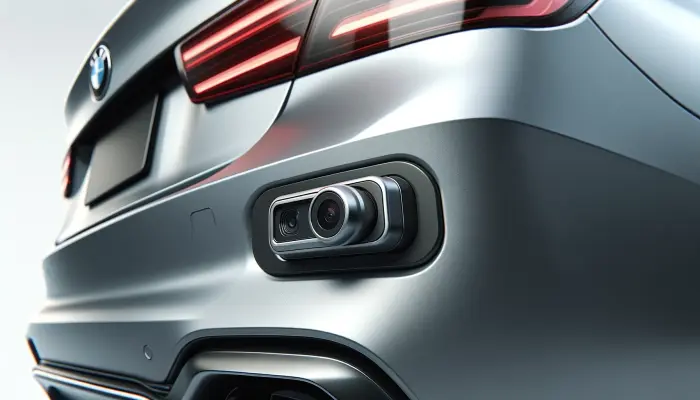A rear view camera has become an essential part of modern vehicles, easing parking and maneuvering in tight spaces. Avoiding parking accidents requires careful selection of this device.
Features and Types of Rear View Cameras
Rear view cameras are the most common, though side and front cameras are also available. It's important to understand their features:
- Field of View: The wider, the better. The maximum necessary angle is 180 degrees.
- Low Light Sensitivity: Important for transmitting a quality image in poor lighting conditions. The lower this parameter, the better.
- Viewing Modes: An ideal camera offers several modes, including panoramic, angular, and top-down views.
- Mirror Image Capability: Convenient for those accustomed to using mirrors for maneuvering.
Understanding these characteristics will help in choosing the most suitable rear view camera, ensuring optimal image quality and ease of use.
Design and Installation
There are two types of cameras based on installation method:
- Flush-Mounted: Installed in the bumper or other parts of the car body.
- Surface-Mounted: Placed in the cabin or on external elements of the car.
Given these differences, the choice between flush-mounted and surface-mounted cameras depends on the individual preferences of the car owner and the specifics of its use.
Types by Installation Method
The choice of camera type largely depends on the specific model of the car and the driver's personal preferences. Available options:
- Factory Camera: Designed for specific car models, mounted in specially designated places. Advantages: ease of installation, inconspicuousness, preservation of lighting functions.
- Universal Camera: Suitable for any car. Advantages: ease of installation, waterproofing, high-quality imaging.
Regardless of the chosen type, it's important that the camera meets all safety and driving comfort requirements.
Additional Safety Features
Some camera models are equipped with sensors that provide marking and distance estimation to obstacles:
- Green Zone: Safe distance.
- Yellow Zone: Requires caution.
- Red Zone: Closest distance to the obstacle.
Thus, when choosing a rear view camera, it's important to consider not only its technical characteristics but also the method of installation, as well as additional features that enhance driving safety.
Tips for Installing and Adjusting a Rear View Camera
Installing a rear view camera might seem complex, but following a few key steps will simplify the process:
- Choosing the Installation Spot: Determine where the camera will be installed – on the bumper, in the license plate frame, or another spot designated for your type of camera.
- Power Connection: The camera should be connected to a power source, usually through the rear lights, so that it activates when the reverse gear is engaged.
- Camera Mounting: Follow the instructions provided with your camera. Use all necessary tools and fasteners.
- Wiring: Carefully run the wires from the camera to the monitor in the cabin, trying to hide them under the trim for an aesthetic look.
- Adjusting the Viewing Angle: After installing the camera, adjust the viewing angle to get the most useful image.
- Functionality Check: Before finalizing the camera installation, ensure that it correctly transmits the image and activates when reverse gear is engaged.
Following these recommendations, you can independently and effectively install a rear view camera, ensuring safety and convenience during parking and maneuvering.
Frequently Asked Questions (FAQs) About Rear View Cameras
- Can I install a rear view camera myself? Yes, many cameras are designed for self-installation and come with instructions.
- How do I connect the camera to the car's system? The camera is typically connected to the reverse gear system to activate when the reverse gear is engaged.
- Do I need to drill holes to install the camera? It depends on the type of camera and method of installation. Some cameras require drilling, while others can be installed without it.
- Is the camera compatible with my car? Most universal cameras are compatible with various car makes and models, but always check specifications before purchasing.
- How do I ensure good visibility at night? Choose a camera with good low-light sensitivity and possibly infrared lighting for night vision.
